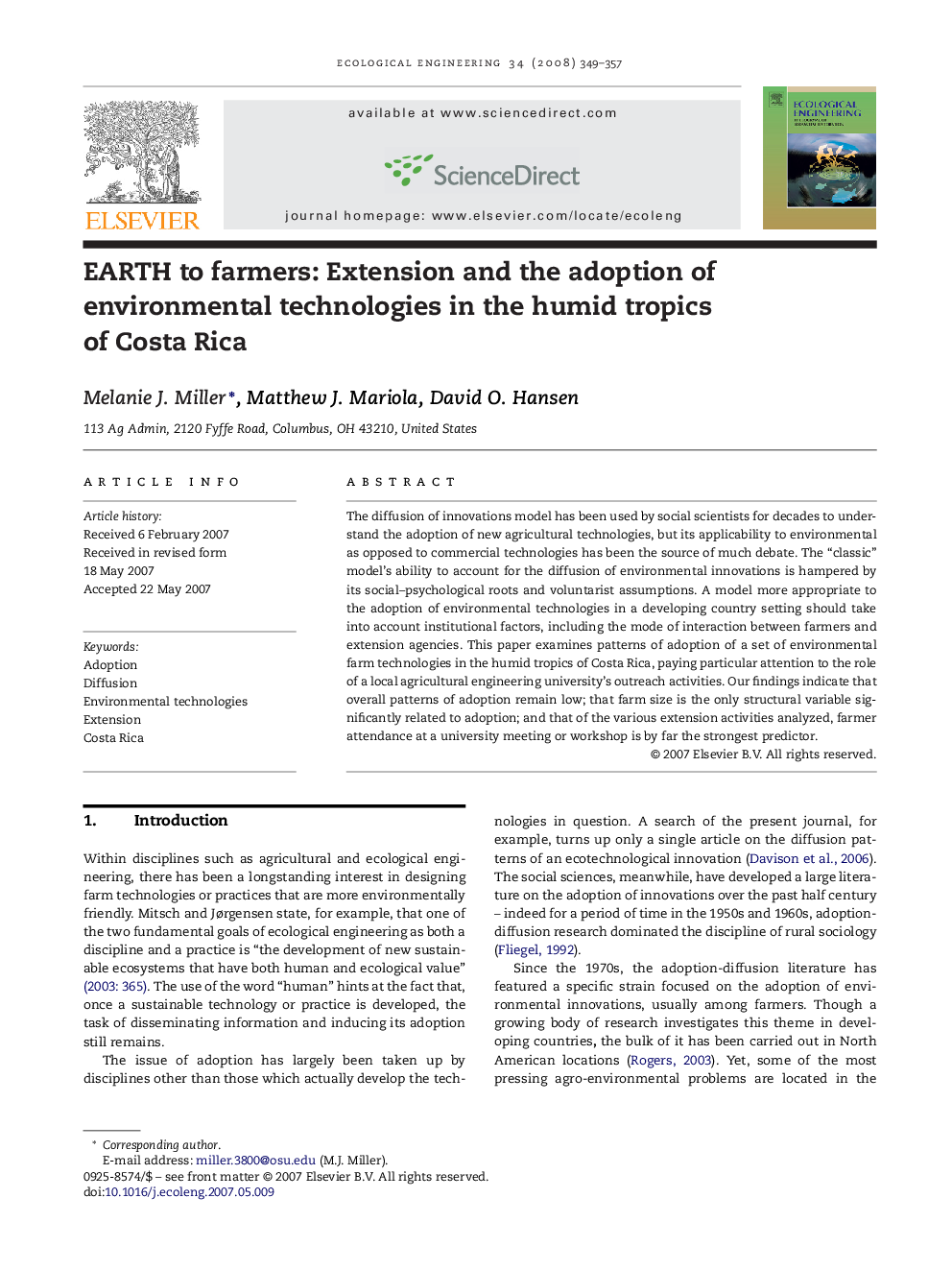| Article ID | Journal | Published Year | Pages | File Type |
|---|---|---|---|---|
| 4390696 | Ecological Engineering | 2008 | 9 Pages |
Abstract
The diffusion of innovations model has been used by social scientists for decades to understand the adoption of new agricultural technologies, but its applicability to environmental as opposed to commercial technologies has been the source of much debate. The “classic” model's ability to account for the diffusion of environmental innovations is hampered by its social-psychological roots and voluntarist assumptions. A model more appropriate to the adoption of environmental technologies in a developing country setting should take into account institutional factors, including the mode of interaction between farmers and extension agencies. This paper examines patterns of adoption of a set of environmental farm technologies in the humid tropics of Costa Rica, paying particular attention to the role of a local agricultural engineering university's outreach activities. Our findings indicate that overall patterns of adoption remain low; that farm size is the only structural variable significantly related to adoption; and that of the various extension activities analyzed, farmer attendance at a university meeting or workshop is by far the strongest predictor.
Related Topics
Life Sciences
Agricultural and Biological Sciences
Ecology, Evolution, Behavior and Systematics
Authors
Melanie J. Miller, Matthew J. Mariola, David O. Hansen,
